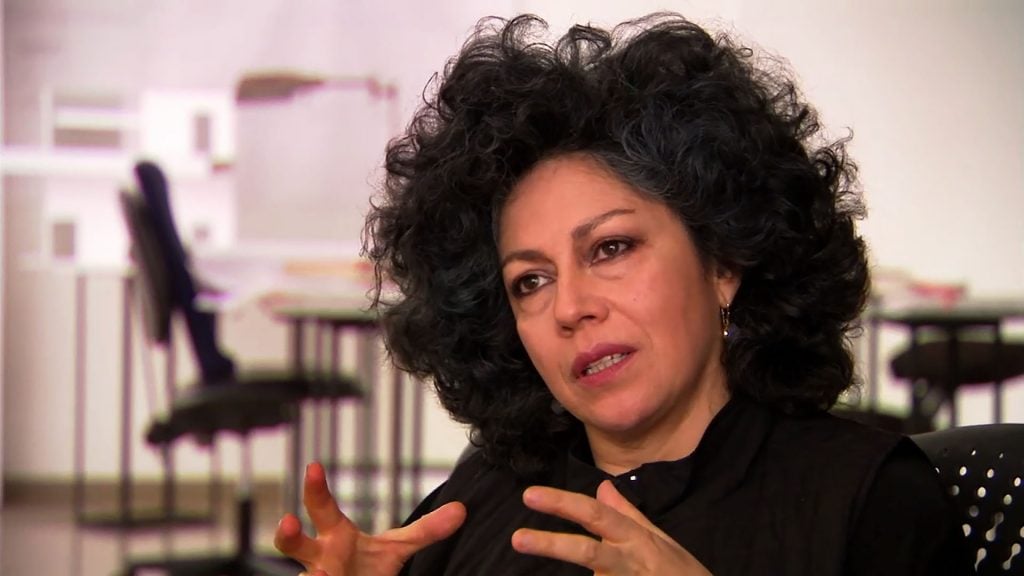On View
‘I Don’t Work Based on Fiction’: How Colombian Artist Doris Salcedo Uses the Absurd to Illuminate Real-Life Tragedy
As part of a collaboration with Art21, hear news-making artists describe their inspirations in their own words.

As part of a collaboration with Art21, hear news-making artists describe their inspirations in their own words.

Caroline Goldstein

The artist Doris Salcedo is not interested in depicting her personal experiences through art. Instead she tries to give life to the experiences of others, especially the silenced masses who are lost to violence or disenfranchisement.
“I am a third-world artist,” the Colombian-born Salcedo says in an exclusive interview with Art21, adding that she puts herself in the position to speak “from the perspective of the victim, from the perspective of the defeated people.”
In the video interview, which originally aired as part of Art21’s Art in the Twenty-First Century series, Salcedo recounts visiting the sites of mass death and destruction and researching the lives of people who were disappeared, unearthing their stories through her work. She describes herself as taking on the role of a “secondary witness” to the travesties of history. “I don’t work based on imagination, on fiction.”
Salcedo’s works are subtle, though they pack a huge emotional charge. Often they are exercises in futility. One, the project Unland, involved embroidering hair into the grain of wood. The artist cites the poet Paul Celan, who once said, “It is only absurdity which shows the presence of the human.”
The interview also features Salcedo’s assistants, part of a 15-person crew who help her bring seemingly impossible ideas into being, often involving their own personal pain and suffering. Ramón Villamarin, who acts as a sort of engineer for Salcedo, notes, “Doris always tries to make something kind of impossible.”
This commitment to the impossible was well in evidence in her Tate Modern Turbine Hall commission, a stunning 160-meter long crack that ran the length of the building’s chic, industrial floor. The title, Shibboleth (2007), is taken from the Bible and refers to a massacre perpetrated over a minor difference. For Salcedo, the physical crack in an otherwise pristine temple of modernism and wealth suggests the pervasive history of racism and colonialism.
In describing the cleaved floor, Salcedo explains, “I wanted this crack to break the building and intrude… almost the same way a nonwhite immigrant intrudes in the sameness and consensus of white society.”
Watch the video, which originally appeared as part of Art21’s series Art in the Twenty-First Century, below.
This is an installment of “Art on Video,” a collaboration between Artnet News and Art21 that brings you clips of newsmaking artists. A new series of the nonprofit Art21’s flagship series Art in the Twenty-First Century is available now on PBS. Catch all episodes of other series like New York Close Up and Extended Play and learn about the organization’s educational programs at Art21.org.